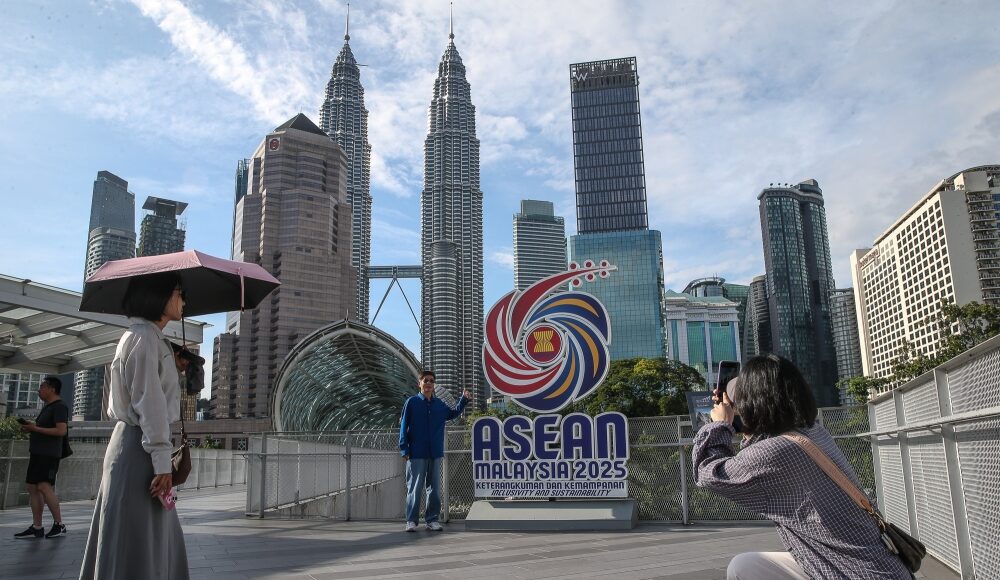MAY 23 — As senior officials from Asean, the Gulf Cooperation Council (GCC), and China engage in closed-door deliberations ahead of the Asean-GCC-China Economic Summit on May 26–27 in Kuala Lumpur, the world witnesses more than just another diplomatic gathering. These behind-the-scenes negotiations reflect a deeper, civilisational search for balance, one rooted not in polemics or posturing, but in trade, investment, and infrastructure.
In a global order strained by war, inflation, decoupling, and rising nationalism, traditional diplomacy often falters. But when diplomacy is fused with logistics corridors, supply chain resilience, and market connectivity, it becomes a force of enduring peace. This is what makes the current summit historic: it institutionalises symmetry among three civilisational spheres — maritime South-east Asia, the Islamic Gulf, and Confucian China.
Strategic triangulation in motion
What makes this summit remarkable is the civilisational geometry it represents. Asean, long seen as a neutral broker, is now positioned as the bridge—linking Gulf liquidity with Chinese technological prowess. The GCC is diversifying rapidly beyond hydrocarbons, while China, facing technological containment by the West, is pivoting toward high-value digital and environmental investments. Asean, in turn, is elevating itself from a low-cost manufacturing hub to a regulatory and normative convener.
This is not just about trade volumes. It is about reconfiguring the entire architecture of economic multilateralism in a post-Western world — one where no party needs to dominate for the system to function.
Market access as a civilisational statement
When senior officials discuss port interoperability, halal certification frameworks, or AI governance standards, they are doing more than negotiating terms — they are creating a shared civilisational grammar. Market access becomes the first expression of recognition. It signals a desire not to exclude others, but to be seen, understood, and valued on one’s own terms.
China’s Digital Silk Road, the GCC’s green hydrogen corridors, and Asean’s biodiversity-based value chains are not competing blueprints. They are complementary avenues for creating value — and values — across regions that refuse to be passive recipients of a waning Bretton Woods system.
Post-western, post-hegemonic multilateralism
This quiet pivot from doctrinal to developmental multilateralism is not a rejection of global institutions. Rather, it is a recalibration. The summit’s ethos is grounded in consensus — not coercion. Unlike the often prescriptive frameworks of Euro-Atlantic multilateralism, the Asean-GCC-China format offers a more fluid, less ideological, and more pragmatic path forward.
As officials work through working group documents and sectoral frameworks, they are scripting an entirely new chapter of regionalism — one that is inclusive but not intrusive.
Symmetry without sameness
Asean’s democratic pluralism, the GCC’s hereditary systems, and China’s state-party configuration may appear incompatible. But this summit is not seeking homogenisation. Rather, it aims to demonstrate that civilisational alignment can occur even amidst political diversity.
Malaysia’s role as Asean Chair is vital here. As a Muslim-majority, non-aligned nation with strong ties to both China and the Arab world, Malaysia is uniquely positioned to frame this summit as a landmark in Chapter VIII diplomacy — regional efforts that support global peace, without the militarised assumptions of traditional alliances.
A tourist takes a photo with the Asean Summit 2025 logo in Kuala Lumpur May 23, 2025. — Picture by Yusof Mat Isa
The infrastructure of trust
Senior officials are not just aligning policy documents — they are coordinating timelines, funding pools, and cross-border data strategies. From port logistics to Islamic finance and cross-border green bonds, the “silent architecture” of integration is being drafted in real time.
One key proposal gaining traction is an Asian Green Deal, underwritten by Gulf capital, constructed with Chinese technology, and implemented through Asean’s ecological knowledge. Another is the seamless integration of halal supply chains from the Middle East to East Asia, requiring legal harmonisation, fintech collaboration, and shared standards.
These moves are not just technocratic — they are civilisationally grounded efforts to foster trust through tangible systems.
A civilisational circle, not a strategic bloc
As geopolitical summits often get reduced to headlines, it’s easy to miss what is actually happening: the convergence of three worldviews through economic pragmatism. This summit does not seek to replicate the Cold War’s binary alliances. Instead, it constructs a civilisational circle — a shared geometry that respects difference while building on mutual needs.
The 20th century was dominated by Atlantic powers. The 21st, especially after the pandemic, wars in Gaza and Ukraine, and the resurgence of American protectionism under Trump, demands a new ethos.
From recognition to renewal
This is not a return to empire, but a civilisational renewal — earned not by conquest, but by cooperation. When market access is the first move, values follow in its wake — not as impositions, but as reflections of mutual respect.
The senior officials now working around the clock in Kuala Lumpur are doing more than laying groundwork for trade — they are rewriting the rules of recognition. They are showing that in a fragmented world, civilisation can still speak to civilisation — not through weapons or treaties, but through standards, ports, and trust.
This is not the end of diplomacy. It is its rebirth — quiet, calculated, and civilisational.
*Phar Kim Beng, PhD, is Professor of Asean Studies at the International Islamic University Malaysia and Visiting Faculty, Asia-Europe Institute, University of Malaya.
**This is the personal opinion of the writer or publication and does not necessarily represent the views of Malay Mail.





